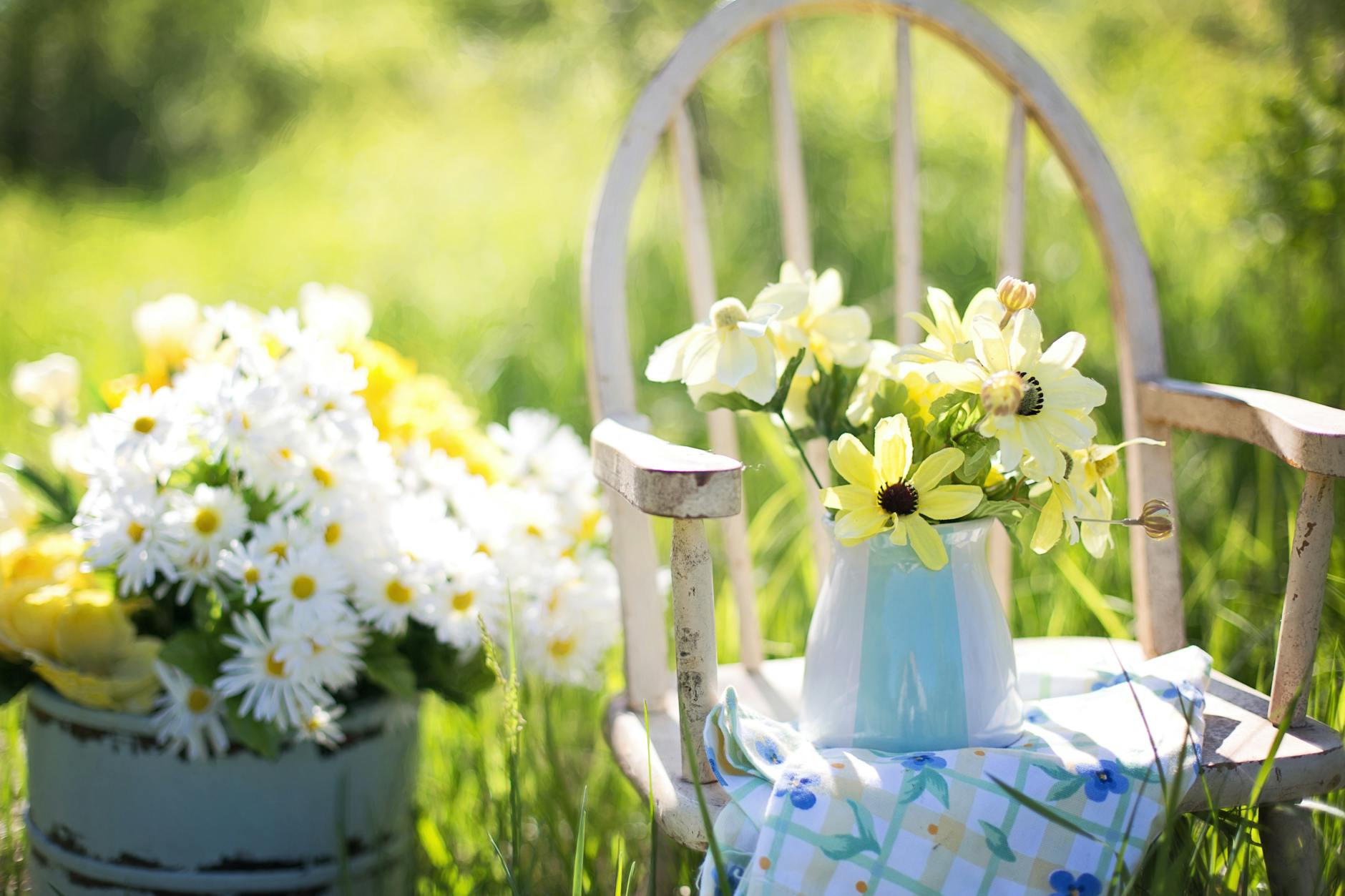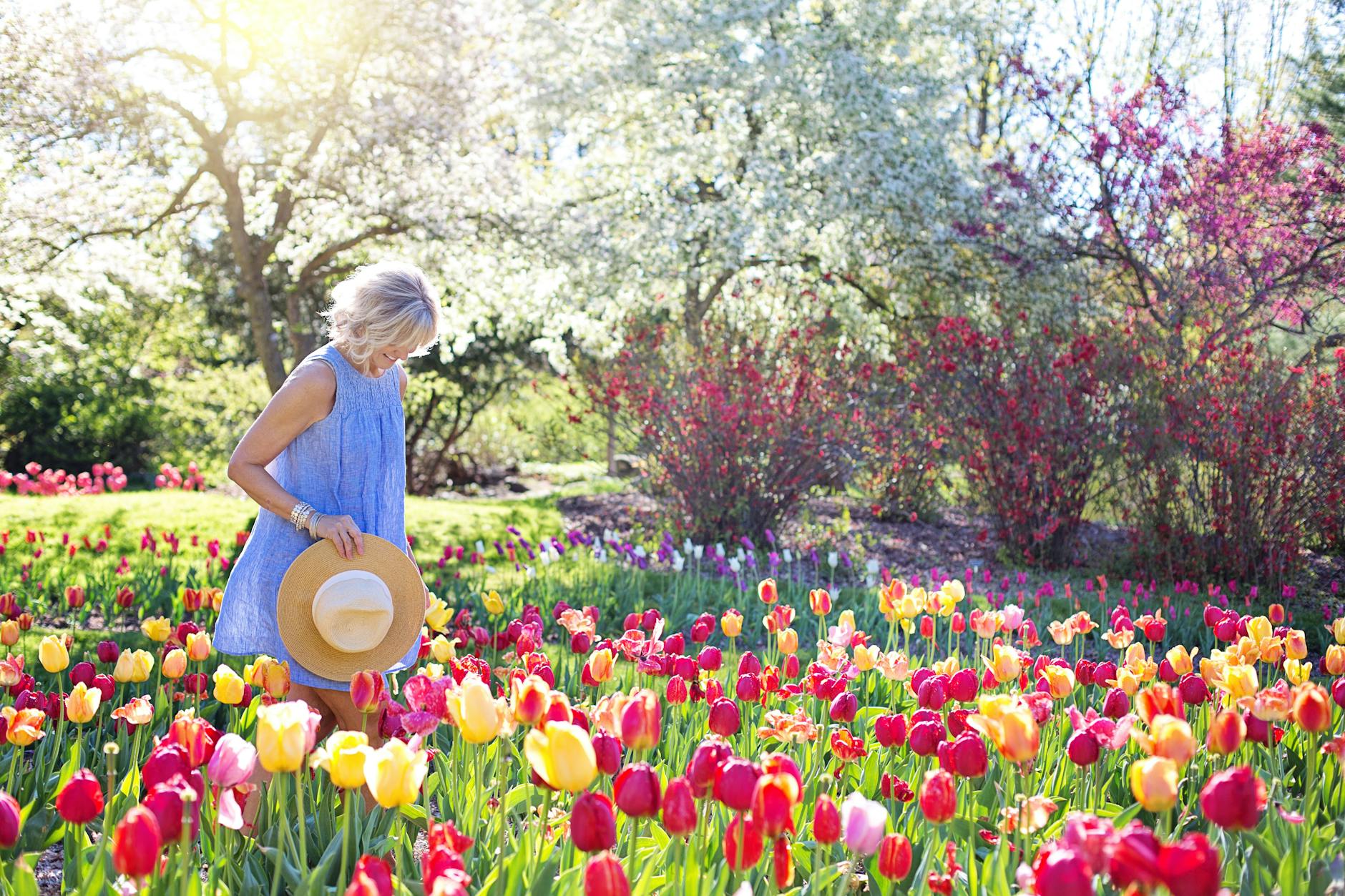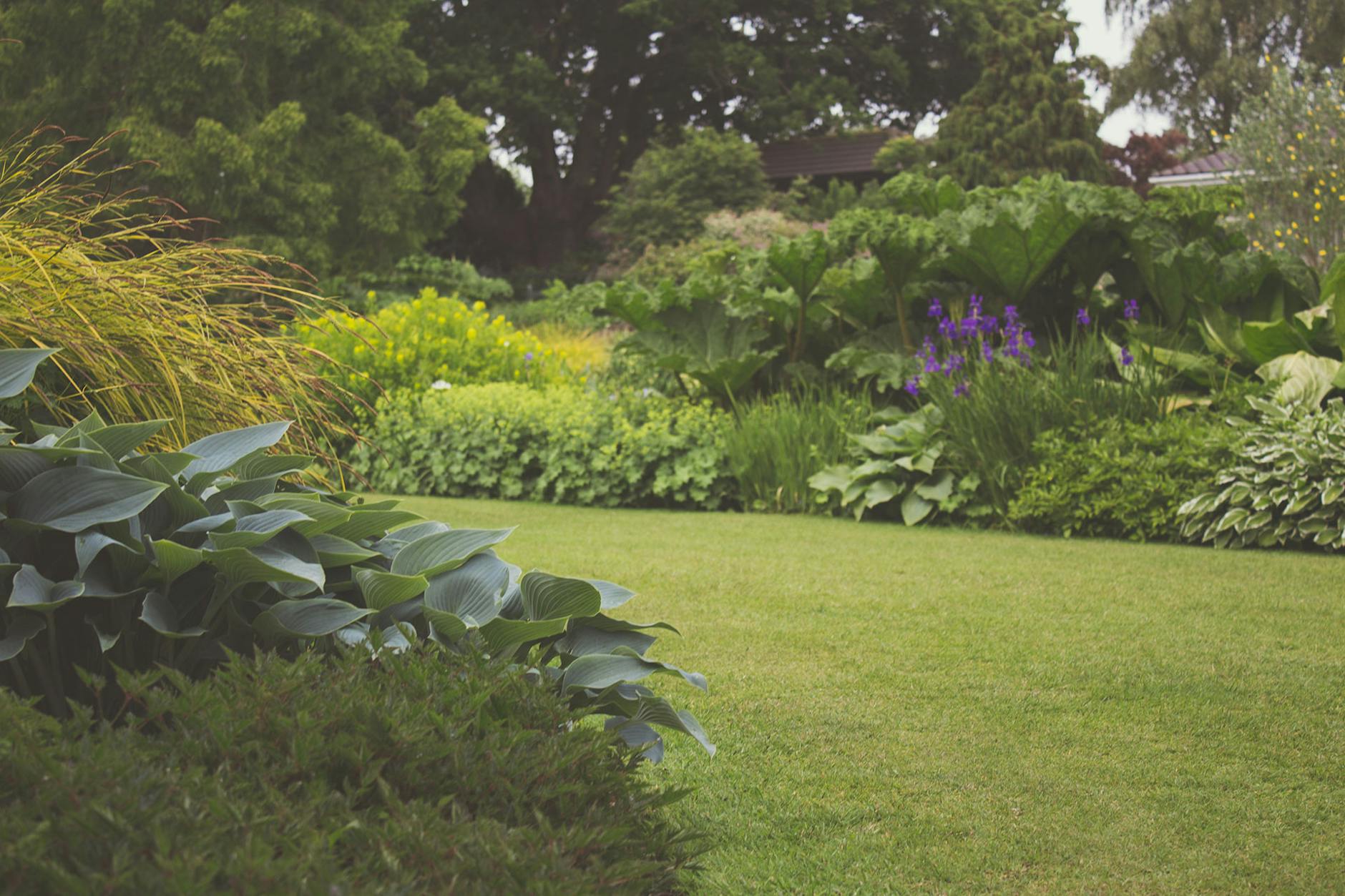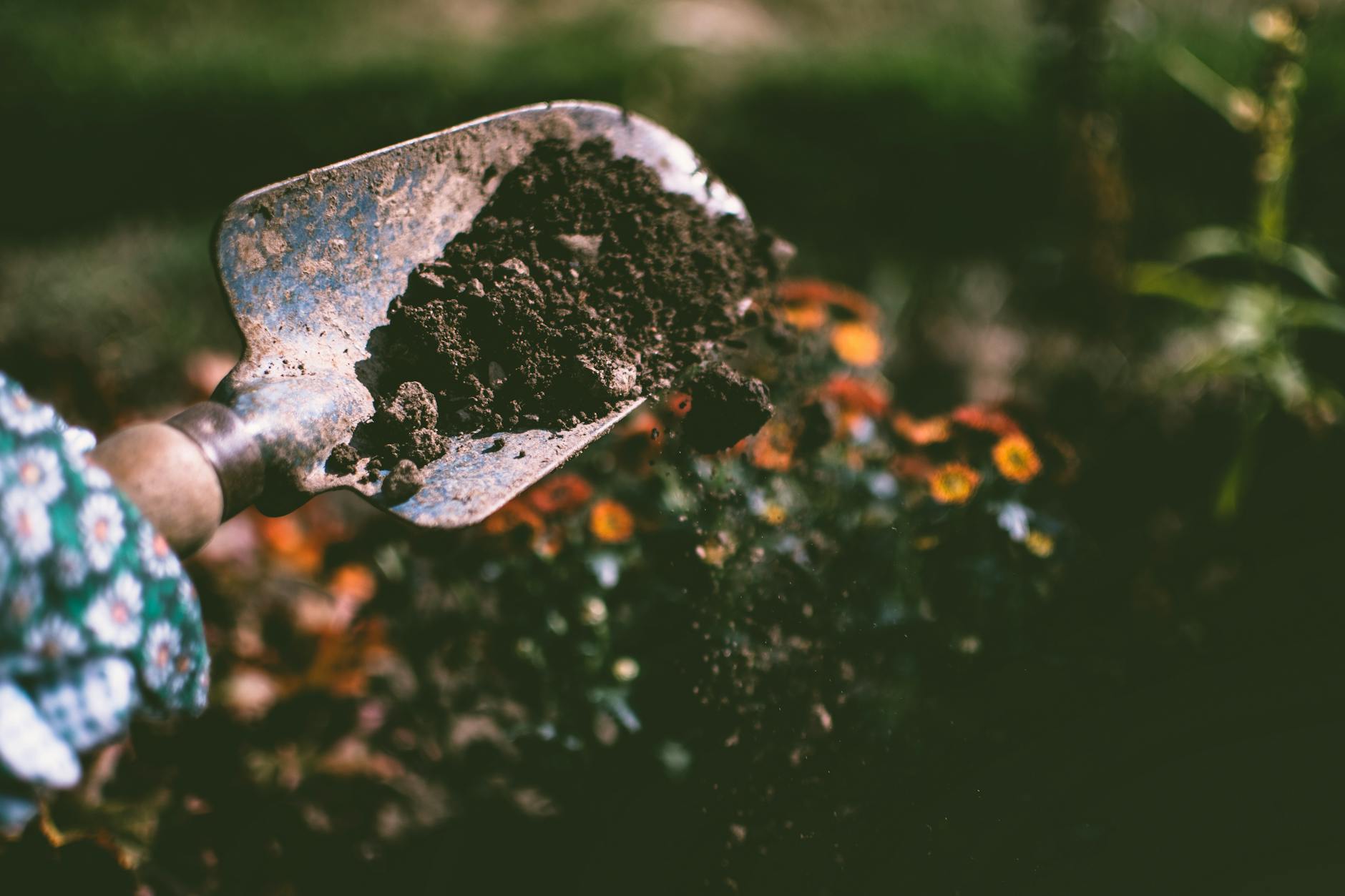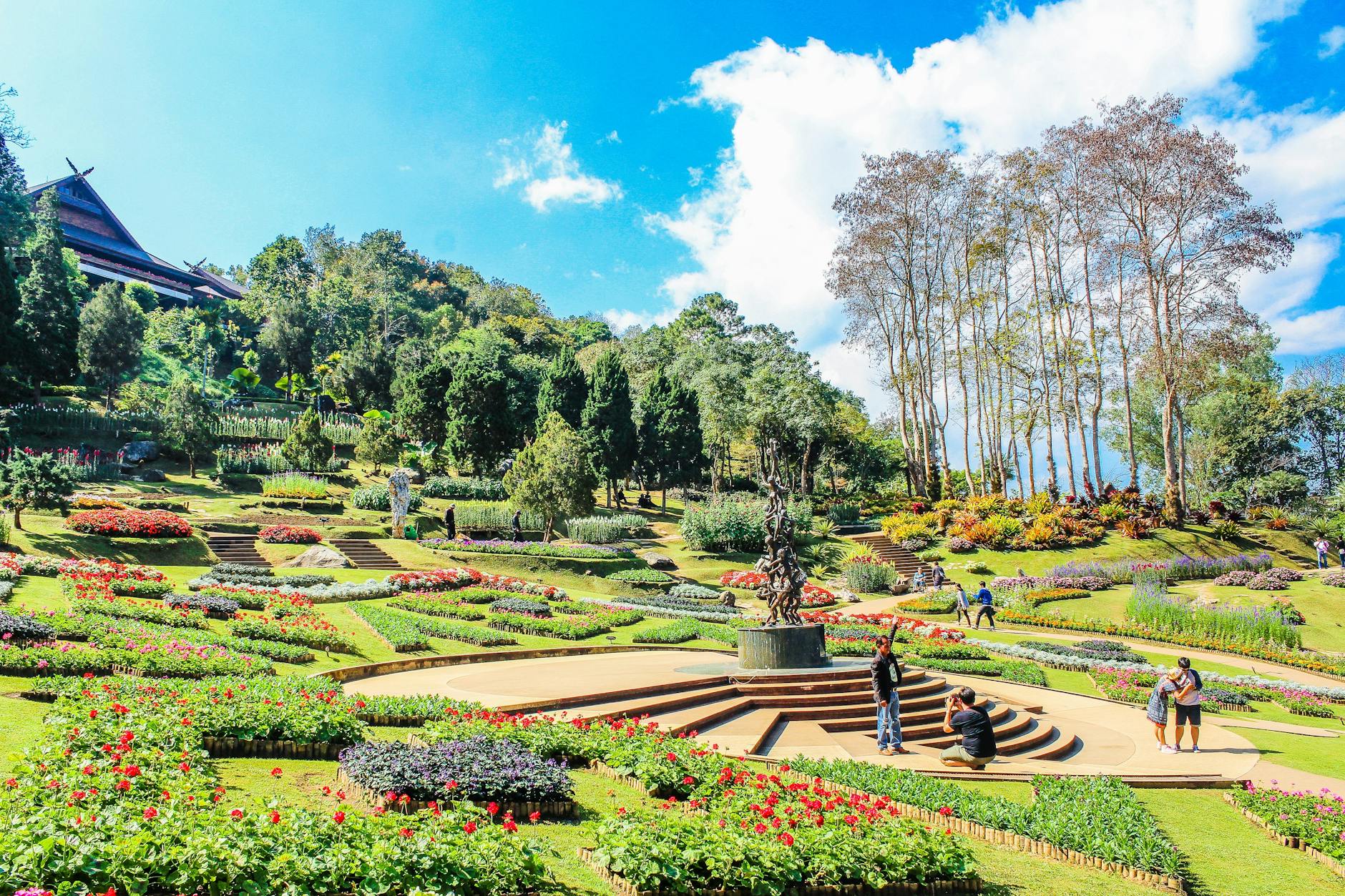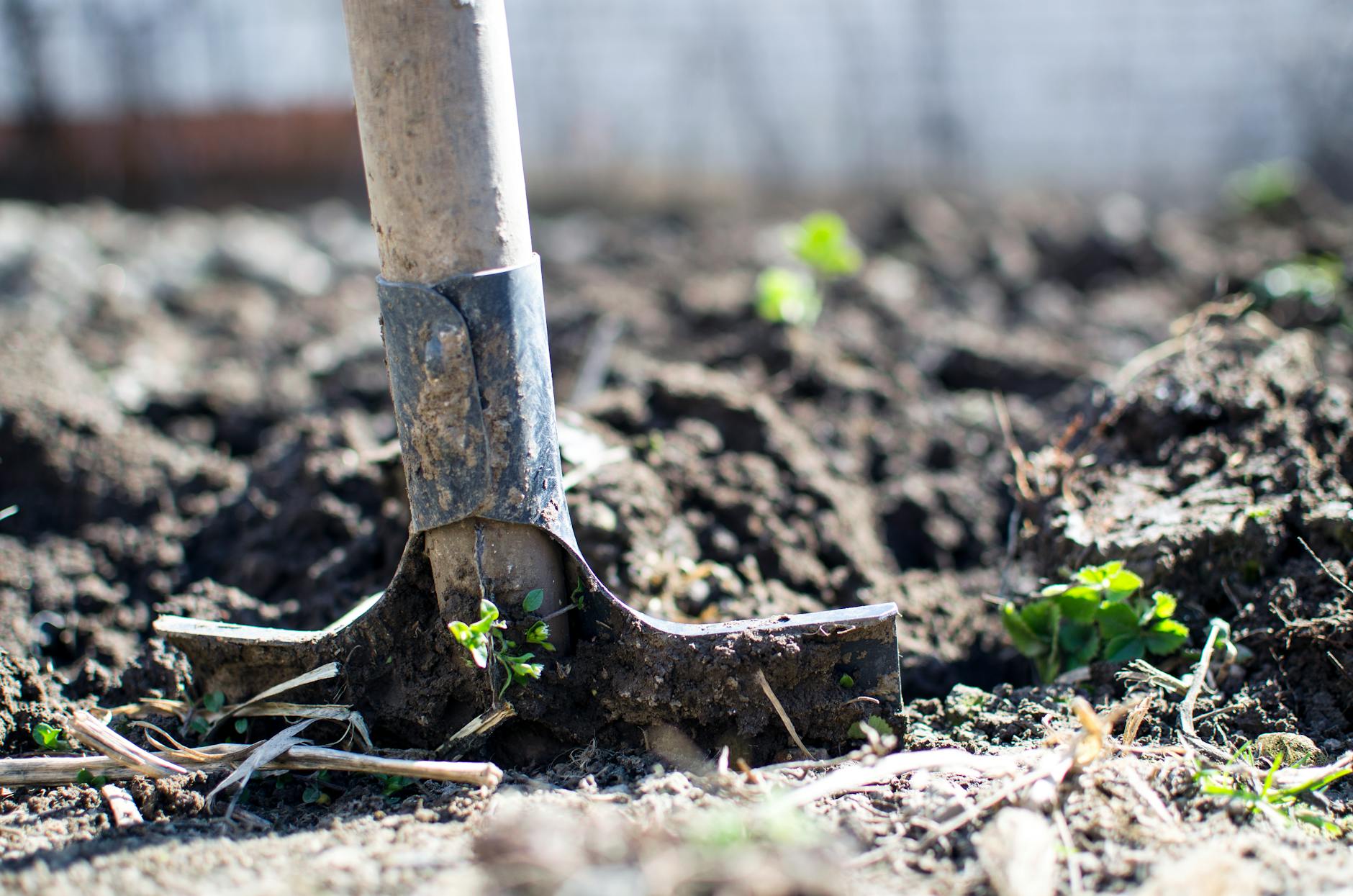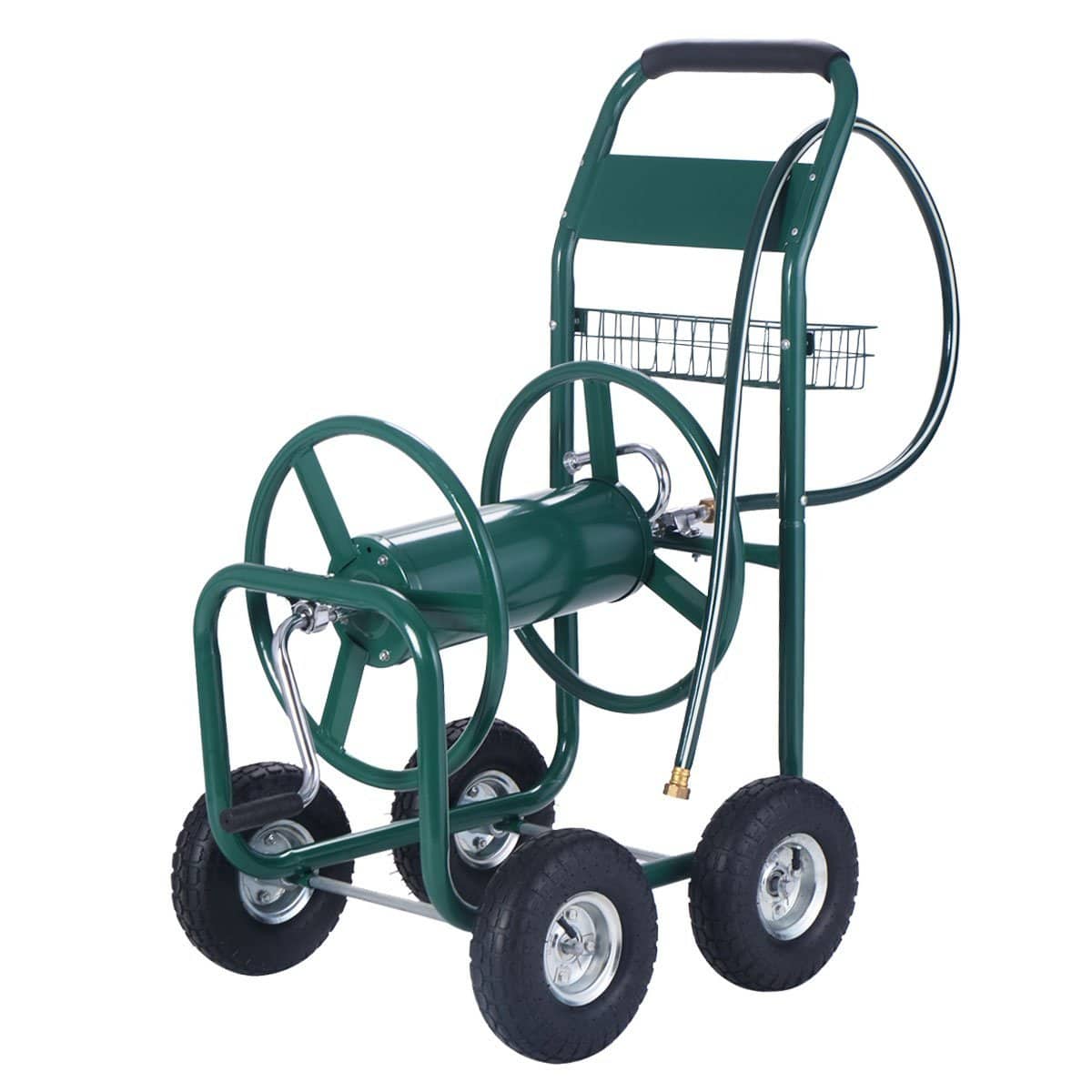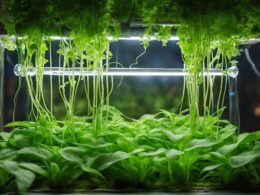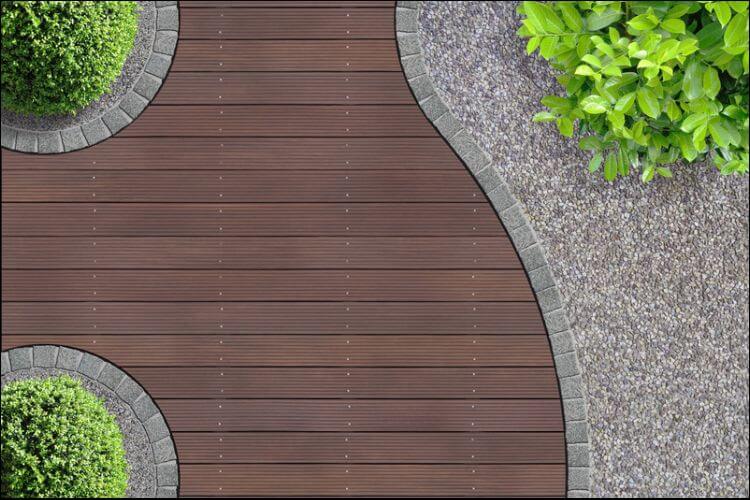After an afternoon of non-stop rain, you open your backdoor to let your dog out. To your dismay — but your dog’s delight — you find your yard replaced with a muddy, mushy swamp. As you eye your newly formed moat and your mud-covered mutt, you figure it’s time to investigate what is a rain garden and how do you make one.
So what is a rain garden exactly, and how can it offer you a solution to your newly formed swamp? A rain garden redirects the water in your yard to maintain native plants. It also helps reduce pollution by providing an environmentally sound filtering solution to run-off. In as little as a day’s work, you can create a rain garden to transform your swamp into an efficient natural filtration system.
Why A Rain Garden?
A rain garden is a great do-it-yourself project that not only adds beauty to your property but also reduces water pollution and flooding. It also has the added benefit of being a source of food and habitat for local wildlife.
Who doesn’t want to relax in their yard as they watch the butterflies frolic around the bursts of color in bloom? And to top it off, you can feel good knowing your personal oasis is also helping reduce pollution in our water sources.
Ready to do your part? Read on to learn how.
What Is A Rain Garden?
image source: Pexels
A rain garden is an environmentally friendly way to reduce runoff from your property while creating a beautiful flower bed that provides food for bees, butterflies, birds, and other wildlife.
These shallow basins can be installed in nearly any unpaved space. They serve to collect and absorb rain and runoff from your house, driveway, sidewalks, and streets.
This decreases the amount of pollution that finds its way into natural water sources, such as streams and rivers. They accomplish this by holding onto the water, allowing it to soak into the ground, instead of instantly running off your property.
Benefits Of A Rain Garden
image source: Pexels
What is a rain garden’s benefit beyond backyard drainage?
Rain gardens are simple to implement and are an inexpensive and environmentally sound solution to problems and pollution associated with stormwater runoff.
The United States Environmental Protection Agency says a rain garden a great, easy, low-tech way to improve the environment and reduce pollution. The U.S. EPA estimates that pollutants carried by rainwater runoff account for 70 percent of all water pollution.
The more land that gets developed, the less ground that is free to absorb and filter rainwater before it returns to streams and rivers. As a result, water runs off properties and along streets and sidewalks, collecting pollution along the way before it returns to streams and rivers.
By creating a rain garden on your property, you can reduce the amount of pollution that enters natural water sources.
According to the Groundwater Foundation, rain gardens can remove up to 90 percent of nutrients and chemicals and up to 80 percent of sediments from rainwater runoff.
Rain gardens reduce standing puddles or swampy areas in your yard by providing a way for water to be filtered systematically. Less standing water means less opportunity for home flooding, and it also means a reduction in mosquito breeding.
It’s also a great way to add a pop of color and variety to your landscape as well as provide food and habitat for birds and butterflies.
Parts Of A Rain Garden
image source: Pexels
So what is a rain garden technically?
A rain garden is usually made up of three parts: a vegetative ponding area, a media or filter layer, and then an optional underdrain.
The ponding area is where the rain flows and temporarily collects on the surface, like a pond. The water slowly filters through a sandy soil layer beneath.
Depending on your property and the type of rain garden you install, the water then works its way to the underdrain, which is usually gravel or rock, where it gets absorbed into the underlying soil or is collected by a perforated pipe that directs the runoff to the storm sewer system.
Constructing A Rain Garden
image source: Pexels
Now that you won’t be wondering,”what is a rain garden?” it’s time to build one.
The Chesapeake Stormwater Network, an organization of nearly 11,000 stormwater professionals around the world, offers a comprehensive guide to help homeowners determine if a rain garden is right for them.
Do you notice rainwater naturally collecting in your yard or a swampy area forming after a storm? Then you have a good idea of where a rain garden could be installed on your property.
If you don’t have any obvious indicators, pay attention to your property’s natural plumbing. What is the path rainwater takes when it flows off your property?
A good place to start is with your downspout. Follow where the water goes from there. If it flows over at least some of your yard before hitting your driveway and or street, the area in between is a great candidate for a rain garden.
If it goes directly to your driveway or street, you may want to see if your downspout can be retrofitted to direct to a rain garden. Otherwise, consider a rain barrel to collect roof runoff to water a garden elsewhere on your property.
Before You Dig
image source: Pexels
Once you map out the location of your future rain garden, it’s time to make a call. It’s important to locate any underground utilities. As with any construction want you do, you first want to make sure the area you are considering is free of any underground lines or wires.
You never want to risk hitting electrical, water, or gas lines or cables when digging.
Not sure who to call? Dial 811 to be directed to your local call center. Call at least two to three business days before you begin working on your rain garden.
You can also visit 811 Call Before You Dig to find your state’s call center or, if your state allows it, make a request online.
Utility companies will be informed of your intent and send a locator to mark any underground utilities. Please note, according to Chesapeake Stormwater, not all state utility companies will mark private utilities.
You may need to locate where they leave the street, cross your yard, and enter your house. After that, you are free to start constructing your rain garden.
Creating Your Basin
image source: Pexels
What is a rain garden basin? The basin is the hole comprised of your two or three filtration layers.
The size and depth of your rain garden depend on your property, the amount of runoff, and the type of garden you want. Dig a hole of at least two feet deep if you plan to lay a pipe in the underdrain.
If you are not using an underdrain, you may only need to dig 6 to 12 inches. The slope of your property dictates the depth needed.
Once you have your garden basin excavated, you can choose to use a filter fabric as a base before adding the layer of stones and the drain pipe, if you are using one.
What is a rain garden drain pipe? It is usually a PVC pipe, sometimes with holes drilled into it, that directs the water off your property.
Next is the layer of sandy soil, which absorbs the water. You want the soil compacted to avoid settling later. You can compact the soil by heavily watering it and allowing several days for it to settle. Add additional soil as needed and repeat the process until this layer remains at the desired level.
To prevent erosion, you may want to consider topping off your garden with gravel or mulch. Alternatively, large decorative stones or well-spaced pavers make a great addition to your garden.
Creating Your Garden
image source: Pexels
Now it’s time to plant any flowers, shrubs, or trees that you wish. Let’s look at what is a rain garden’s ideal vegetation.
As with any garden, you’ll have the most success sticking with native vegetation that flourishes in your planting zone. These plants tend to have longer roots than non-native plants, which allows for better water absorption.
Follow any plant-specific instructions for spacing, planting depth, and watering. You can use weed fabric and mulch to prevent unwanted vegetation and add another layer of filtration and erosion protection.
What is a rain garden composed of? Depending on the size and location of your rain garden, you can plant anything from perennial flowers and shrubs to trees. Always stick with native vegetation for the best results
If you have space, consider trees and shrubs, which can create a canopy that diverts rainwater and reduces runoff.
Place an odd number of each type of plant together to help your garden look more dynamic. Apply the same rule to plant height, color, size, and texture to create visual interest.
On a practical note, consider the amount of water when deciding where to place plants. Place plants with deeper roots in the center versus the sides and the edge. This plants should have the ability to withstand pooling water. Most of the time, your rain garden will be dry. However, after a storm, it could hold water for 12 to 48 hours.
Also, consider the sturdiness of the plants near where water will rush into the rain garden. Chose plants that thrive in whatever amount of sun your rain garden is exposed to.
Maintaining A Rain Garden
Now that your beautiful and functional rain garden is planted, sit back and take in the view. However, just like with your lawn, your garden will need some periodical maintenance.
What is a rain garden maintenance plan? It’s a few simple steps to follow to keep your rain garden in top shape for years to come.
Like any garden, you should regularly water your rain garden until it is established. You will also need to weed it. Depending on what you plant, you may have to prune at the end of the growing season. If you are using native plants, you will not need to fertilize the soil.
In the spring, you will probably need to add more mulch to keep erosion at bay.
Pay attention to the amount of water that enters your rain garden throughout the year. Also, monitor how the plants fair until the water filters out. If the water enters too fast, consider adding some rocks at your garden’s inlet to slow it down. This will help lessen the runoff.
Check on your plants periodically. If something is not thriving, consider replacing it. If a plant is taking over, you may need to trim it back or pull some of it out.
Now that you know what is a rain garden and how it can keep your yard, and your dog, mud-free, what are you waiting for?
By adding a rain garden to your property, not only are you and creating an aesthetic element to your yard, you are doing your part to lessen pollution. And the bees, butterflies, and birds will thank you for providing food sources and habitats.






